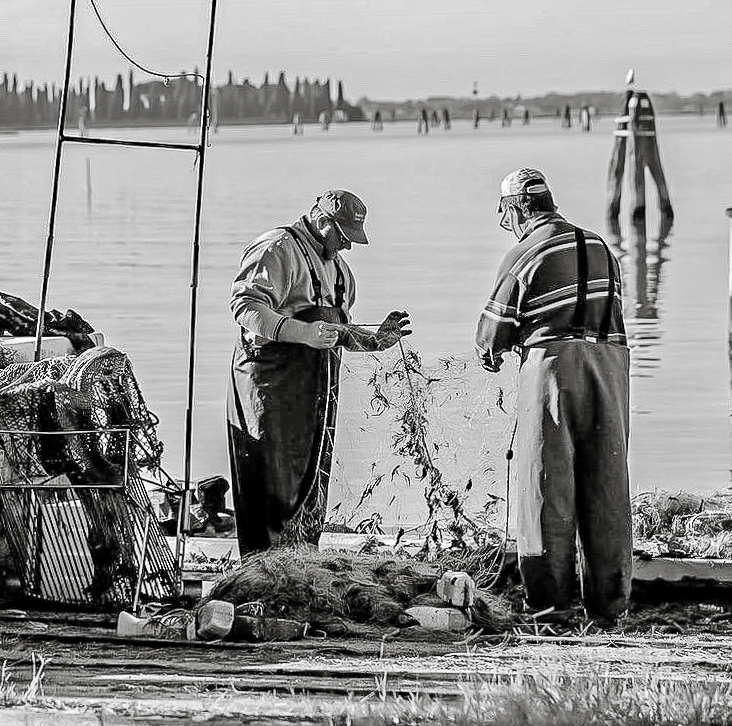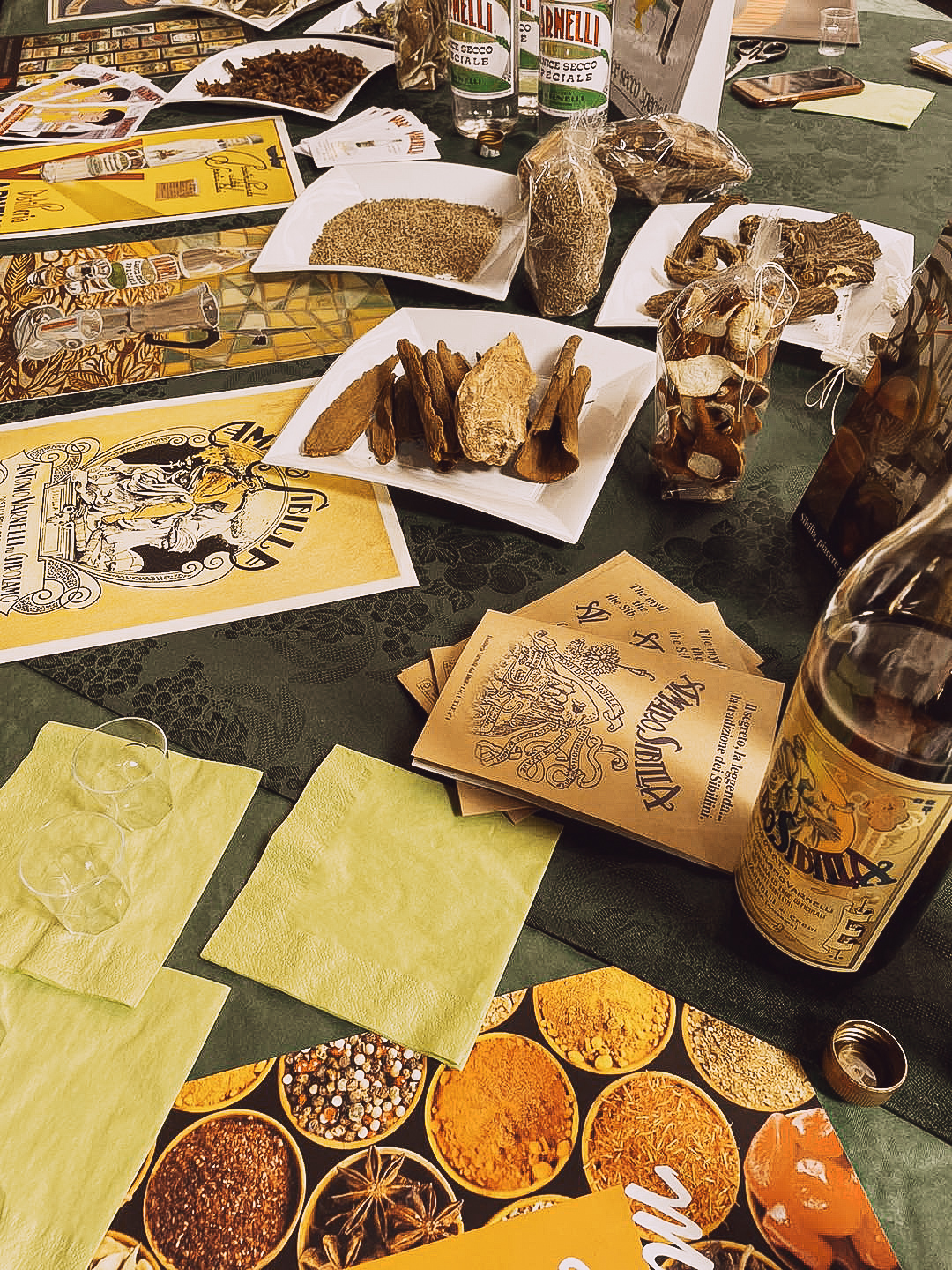In Venice, everyone could tell you about the flood of 4 November 1966, when the water level reached 194 cm on Piazza San Marco. My generation knows this event only from hearsay and until two weeks ago, it seemed unlikely that we would ever witness a similar one. After all, they used to happen only every 150-200 years.
Yet, the nightmare became reality on 12 November 2019, without us noticing first: The flood surprised because of its speed and violence, brought on by three winds causing violent storms and devastating waves. The waves arrived in the city and not just broke window glass but swept over into gardens and homes, destroying what was in its way, not just gondole and vaporetti.


In this interview, I’m speaking with our grandmother who witnessed both floods and so vividly recalls the acqua granda of 1966.
Iris: Were you surprised that last week’s flood turned out so devastating, reaching level 187 cm and possibly more?
Lina: No. The winds sweeping the city during the two days preceding the flood were the most obvious sign that we were in for a serious event: The rare combination of the southwesterly libeccio and the opposing wind forces scirocco (southerly) and bora (northerly) just had to wreak havoc: The humid plumb skies are a sign of scirocco, the blue skies of bora, and storms usually arrive in the wake of the libeccio. The New Moon phase wasn’t over yet, so issues with severely rising water levels was certain.
Iris: How can we live with the frightening knowledge that we are so exposed to floods?
Lina: The floods are part of life in this Lagoon, so living here is a risk you must take into account. Moderate flooding is necessary to flush and nourish the Lagoon as the largest part of plants are halophile. But within a certain range! Floods turned out so severe because Lagoon stewardship has been neglected (played down), which goes back to the times when Venice wasn’t able to take decisions for herself (from 1797).
A solution for Venice and the Lagoon will come, I’m sure about that, but it won’t come overnight. During stage one on the way back to a viable Lagoon, measures may well go into a direction that could impact the long-term viability of the Lagoon.
12 November 2019 has changed Venice forever. We will see the impact of this day during the decades to come, and some of the damage will be with us forever. We’ve come to the decisive stage: Many small businesses, the backbone of the city, may start leaving the city like they did in 1966. The drain of people leaving the city might just continue so we need a solution urgently. 2020 is too late.
I’m convinced that in 30-50 years from now, there won’t be cruise ships in the Lagoon. In the meantime, an emergency solution (such as rerouting ships while finding a solution for the port of Venice and flood regulation) will be put in place. I don’t think we can revert the damage in the Lagoonscape within a few years. It will take decades: 10-30 years to ascertain and contain it, another 20 years to stabilize, and another 20-30 years to revert and finalize.
ris: How do we cope in Venice during and after such a flood?
Lina: We help each other and live from day to day: Making sure there’s shelter for everyone, drinking water, electricity, food and in particular, bread for all. Many bakeries in Venice were badly damaged, like Majer in Via Garibaldi, and about half of the bakeries are still closed.
The Civil Protection Services were doing an incredible job, answering 147 emergency calls for help alone on 12-13 November (imagine the kitchen flooded and the emergency unit arrives within 10 minutes: They help carry the two huge freezers in a family-run hotel onto the terrace on the second floor and thus avoid anyone from hurting themselves – and they have saved the freezers from the salt water). The civil services, from hospital to police to maintenance workers saved lives and entire existences because you know, most of the damage and what happened in the night of 12/13 November will remain private. These stories are not out there on the Internet.
Iris: Can Venice survive another flood like this?
Lina: Perhaps one or at most two. I cannot say right now, as we need to wait for the evidence. We need to wait for our homes to dry and can only then assess the extent of the damage. The danger is that Venice is getting weaker with each flood. We can’t neglect the mid-term effects of such a series of floods. Another event like this, and many inhabitants will leave the city, not because they want to, but because they cannot afford to remain here financially. More animals and plants will die, buildings, art collections, gardens and books will be lost.
Iris: How do Venetians react to the flooding?
Lina: While some moments are pure desperation, there’s so much community and help amongst Venetians, and our friends! I’m so grateful for all the voices on the internet (Twitter, Facebook, Instagram, personal messages) who encouraged us.


Iris: Which message do you have for our readers who love Venice?
Lina: Consider the complete picture and story of this city: 2019 is one year in the life of Venice, albeit a decisive one for her physical existence.
But so are other years in our 1600-year-old history. Below, you can find a selection of them. Decisive years, and decades that preceded and followed.
- 1348: Bubonic plague devastates Venice.
- 1379: The Genoese fleet threatens the existence of Venice, entering the Lagoon at Chioggia.
- 1571: Battle of Lepanto weakens the Venetian armada.
- 1575: Bubonic Plague leads to the construction of the Redentore Church.
- 1631: Bubonic Plague leads to the construction of the Basilica della Salute.
- 1966: Devastating flood, contaminating the Lagoon and causing many inhabitants to leave
- 2019: Cruise ship accidents, plus acqua granda (serious flooding)
Venice has been through a number of natural disasters, wars and epidemics! Speaking positively, we’ll come up with a solution for this one as well. One step a time, even though the first of these steps may be into the wrong direction.

Now what about this testing year 2019. And the decade that preceded it?
On 13 November 2019, all developments of the previous decade (overtourism, environmental and social issues, etc) converged and peaked in Venice, during a week of repeated high tides and disastrous floodings.
Issues present anywhere in the world are exacerbated in the small world of this special city. That’s why the effects of the pandemic which ensued in early 2020, hit the city particularly hard.
But then, for centuries, trends, solutions and new ways of living have been coined by Venice as well. Venice has always been the trendsetter, which may seem paradox because an ancient city has always coined innovation in Europe.
To be continued.



+ show Comments
- Hide Comments
Add a comment